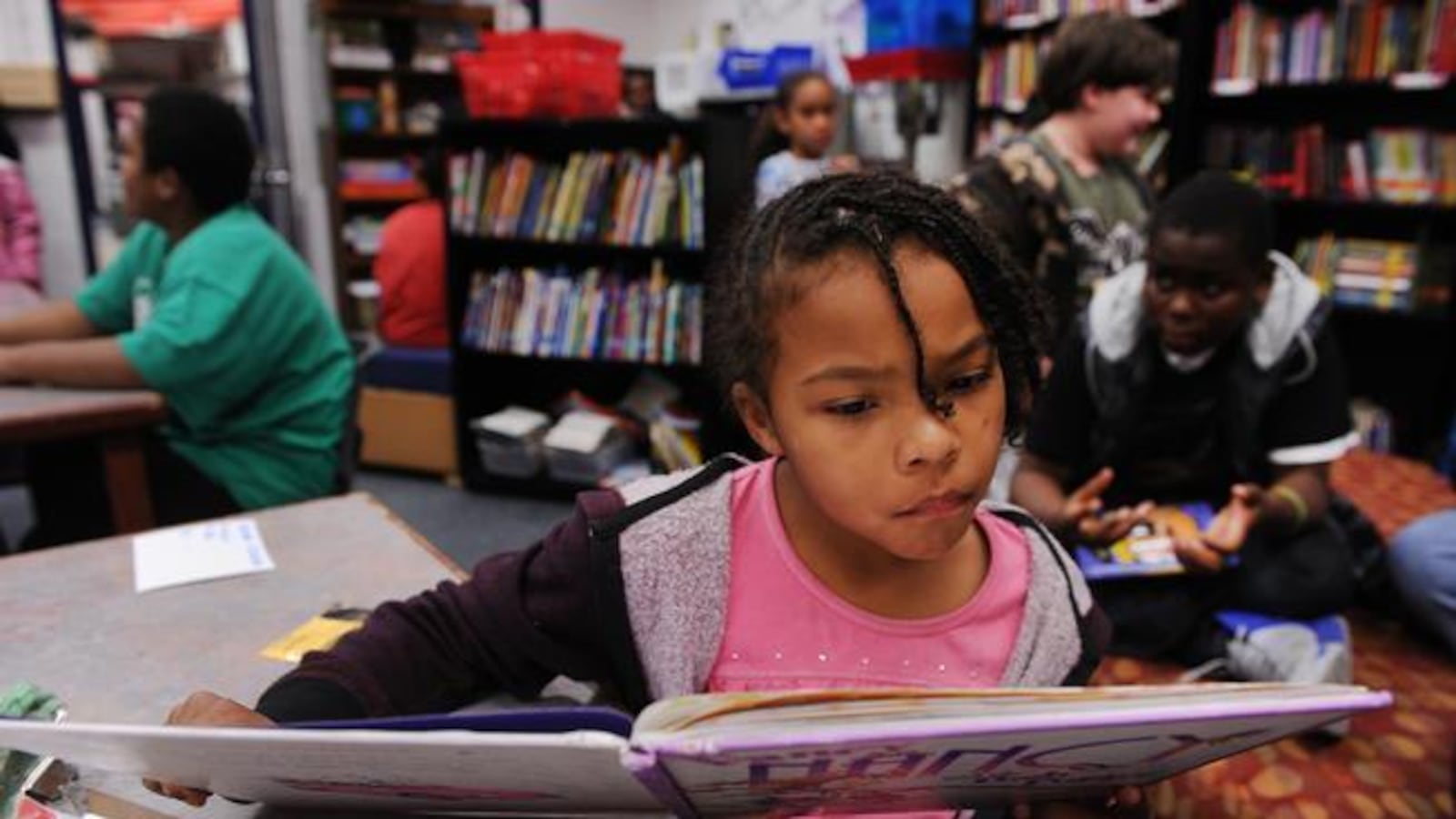Lately, lots of people are talking about reading. Specifically, how it’s taught (or not) in America’s schools.
Much of the credit is due to American Public Media reporter Emily Hanford. In September, she took an in-depth look at what’s wrong with reading instruction in the nation’s classrooms and how explicit, systematic phonics instruction could help.
The crux of the issue is this: In the 1980s and 1990s, the “whole language” approach to teaching reading took hold, relying on the idea that learning to read is a natural process that could be helped along by surrounding kids with good books. At many schools, phonics was out.
In time, many educators brought small doses of phonics back into their lessons, adopting an approach called “balanced literacy.” The problem is, neither whole language nor balanced literacy is based on science, Hanford explained.
Her work on the subject — an audio documentary called Hard Words, a follow-up Q&A for parents, and an opinion piece in the New York Times — has spawned much discussion on social media and elsewhere.
A Maine educator explained in her piece for the Hechinger Report why she agrees that explicit phonics instruction is important but doesn’t think “balanced literacy” should be thrown out. A Minnesota reporter examined the divide in her state over how much phonics should be included in reading lessons and how it should be delivered.
In a roundtable discussion on reading last spring, Stephanie Finn, a literacy coach in the West Genesee Central School District in upstate New York, described the moment she became disillusioned with the whole language approach. It was while reading a story with her young daughter.
“The story was about gymnastics and she had a lot of background knowledge about gymnastics. She loved gymnastics. She knew the word ‘gymnastics,’ and ‘balance beam’ and ‘flexible’ and she got to the girl’s name and the girl’s name was Kate, and she didn’t know what to do,” said Finn. “I thought ‘Holy cow, she cannot decode this simple word. We have a problem.’”
In an opinion piece in Education Week, Susan Pimentel, co-founder of StandardsWork, provides three recommendations to help educators promote reading proficiency. Besides not confining kids to “just-right” books where they already know most words, she says teachers should increase students’ access to knowledge-building subjects like science and social studies. Finally, she writes, “Let quality English/language arts curriculum do some of the heavy lifting. Poor-quality curriculum is at the root of reading problems in many schools.”
Meanwhile, some current and former educators are asking teacher prep program leaders to explain the dearth of science-based lessons on reading instruction.
An Arkansas teacher wrote in a letter to her former dean on Facebook, “while I feel like most of my teacher preparation was very good, I can say I was totally unprepared to teach reading, especially to the struggling readers that I had at the beginning of my career in my resource classroom.”
Former elementary school teacher Robert Pondiscio, a senior fellow and vice president for external affairs at the Thomas B. Fordham Institute, wrote to his former dean, “I’m grateful for the professional credential … But if there’s anything one might expect an advanced degree in elementary education to include, it would be teaching reading. It wasn’t part of my program.”
Teachers, now we’d like to hear from you. What resonates with you about the recent news coverage on reading instruction? What doesn’t? Share your perspective by filling out this brief survey.

